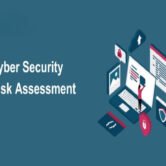
How does incident management fit into the application maintenance lifecycle?
Detection and Identification
- Incident management begins with the detection of unexpected application behavior.
- Monitoring tools and user reports trigger alerts for errors, performance issues, or failures.
- Incidents are logged with key details such as time, impact, and symptoms.
- Prioritization is based on severity, affected components, and business impact.
- Initial diagnosis identifies whether the incident relates to code, infrastructure, or configuration.
Response and Containment
- Support teams are notified through predefined workflows for rapid engagement.
- Temporary measures are applied to stabilize the application and reduce user impact.
- Communication protocols inform stakeholders and users of the ongoing issue.
- Access to affected services may be restricted to prevent further disruption.
- Incident status is updated in real time until root causes are confirmed.
Investigation and Resolution
- Root cause analysis is conducted using system logs, performance metrics, and error traces.
- Fixes are developed, tested, and deployed to resolve the underlying problem.
- Temporary patches may be replaced with permanent corrective actions.
- Resolution time is measured to assess responsiveness and effectiveness.
- Post-resolution validation ensures the application is restored to normal operation.
Documentation and Knowledge Capture
- A detailed incident report is prepared for internal tracking and future reference.
- Information includes cause, impact, response steps, and corrective measures.
- Lessons learned are documented to refine incident handling procedures.
- Common issues are compiled into knowledge base articles or support materials.
- Documentation supports training, compliance, and audit readiness.
Prevention and Maintenance Integration
- Recurrent incidents are flagged for deeper analysis and preventive maintenance.
- Monitoring thresholds and alerts are refined to improve detection accuracy.
- Updates are applied to prevent similar incidents in the future.
- Maintenance schedules are adjusted to include newly identified risks.
- Incident metrics feed into maintenance planning and continuous improvement cycles.





